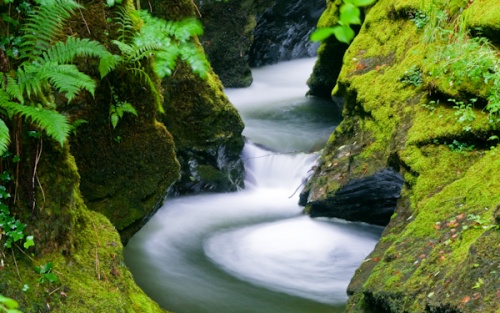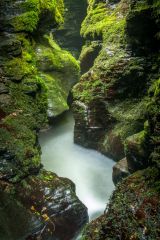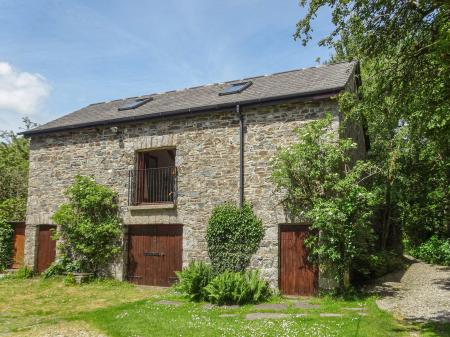
At one end of the Gorge is Whitelady waterfall, a beautiful cascade. At the other end of the gorge, near the National Trust visitor centre, is the Devil's Cauldron, where you can walk out along a viewing platform and look down on roiling, swirling, mesmerising whirlpools formed by the shape of the rocks on either side of a narrow passage.
Between the two ends of the gorge are footpaths along the river and through attractive woodland. The paths pass a second waterfall named Tunnel Falls. Near Whitelady is a disused railway line, where footpaths lead to a bird hide. Indeed, the entire gorge is a good place to practice your bird-watching skills!
Lydford Gorge is a Site of Special Scientific Interest (SSSI). The Gorge covers 36.23ha (almost 90 acres) and the sides of the gorge are lined with hazel and oak trees.

Immediately outside the confines of the Gorge is historic Lydford, a Saxon village that boasts a medieval castle that was once a notorious prison.
History
Lydford Gorge became a popular destination for visitors in the late 18th century, especially after the Napoleonic Wars made travel on the European continent impossible. British travellers turned their attention to destinations within the British Isles, and Lydford was one of those.
The writings of William Gilpin helped promote an appreciation of the 'picturesque' elements of nature, and Gilpin himself extolled the dramatic beauty of Lydford Gorge in 1798. In Gilpin's wake came painters, poets, writers - and ordinary people - eager to see for themselves the wonders of the Gorge.
In 1875 the railway reached Lydford village, making the Gorge easily accessible to lower-class visitors from major urban centres like Exeter and Plymouth. The National Trust bought the Gorge from the Radford family in 1947.
Note: Please use good waterproof footwear. Footpaths along the gorge can be slippery in wet weather, and even in dry weather the spray from the river and waterfalls can make the going wet and muddy in places.
I adored my visit to Lydford Gorge; it truly is a stunning place to visit.

Getting There
Lydford is on a minor road off the A386 just north of Mary Tavy. The National Trust visitor centre for Lydford Gorge is signposted on the road leading south from the centre of Lydford village. Parking is free for Trust members but a charge applies for all other Gorge visitors.






 We've 'tagged' this attraction information to help you find related historic attractions and learn more about major time periods mentioned.
We've 'tagged' this attraction information to help you find related historic attractions and learn more about major time periods mentioned.



